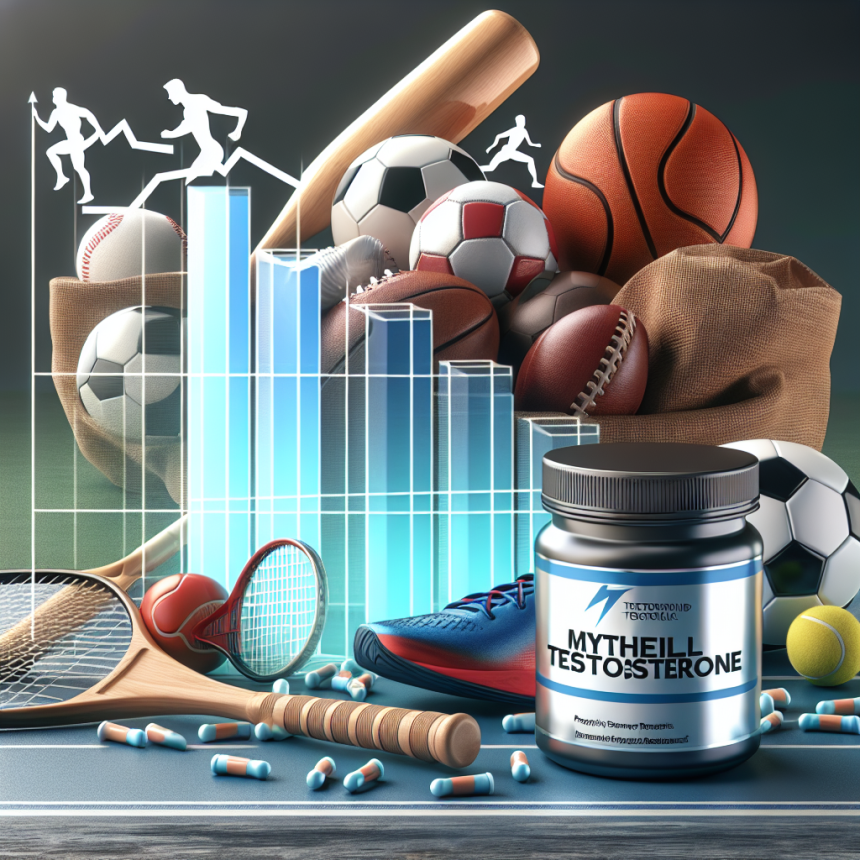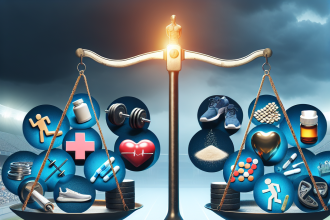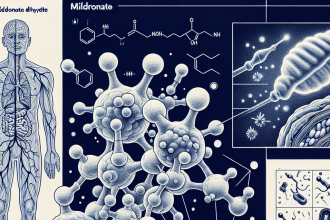-
Table of Contents
- Methyltestosterone: Potential Booster for Sports Performance
- The Science Behind Methyltestosterone
- Pharmacokinetics and Pharmacodynamics
- Potential Benefits for Sports Performance
- Increase in Muscle Mass and Strength
- Improved Recovery and Endurance
- Enhanced Aggression and Competitive Drive
- Risks and Side Effects
- Cardiovascular Risks
- Hormonal Imbalances
- Potential for Abuse and Addiction
- Real-World Examples
- Expert Opinion
- References
Methyltestosterone: Potential Booster for Sports Performance
In the world of sports, athletes are constantly seeking ways to improve their performance and gain a competitive edge. While training, nutrition, and genetics play a significant role, the use of performance-enhancing drugs (PEDs) has also been a controversial topic. One such PED that has gained attention in recent years is methyltestosterone, a synthetic form of testosterone. This article will explore the potential benefits and risks of using methyltestosterone as a booster for sports performance.
The Science Behind Methyltestosterone
Methyltestosterone is a synthetic androgenic-anabolic steroid (AAS) that was first developed in the 1930s. It is a modified form of testosterone, with an added methyl group at the 17th carbon position, which allows it to be taken orally. This modification also makes it more resistant to metabolism by the liver, resulting in a longer half-life compared to testosterone.
Like other AAS, methyltestosterone works by binding to androgen receptors in the body, which then stimulates protein synthesis and muscle growth. It also has androgenic effects, such as increased aggression and libido, which can be beneficial for athletes in certain sports.
Pharmacokinetics and Pharmacodynamics
When taken orally, methyltestosterone is rapidly absorbed from the gastrointestinal tract and reaches peak levels in the blood within 1-2 hours. It is then metabolized by the liver and excreted in the urine. The half-life of methyltestosterone is approximately 4 hours, meaning it needs to be taken multiple times a day to maintain stable blood levels.
The pharmacodynamics of methyltestosterone are similar to that of testosterone, with the main difference being its increased resistance to metabolism. This results in a longer duration of action and potentially greater effects on muscle growth and performance.
Potential Benefits for Sports Performance
The use of methyltestosterone as a performance enhancer has been a topic of debate for many years. While it is banned by most sports organizations, some athletes still use it to gain an edge. So, what are the potential benefits of using methyltestosterone for sports performance?
Increase in Muscle Mass and Strength
One of the main reasons athletes use methyltestosterone is to increase muscle mass and strength. Studies have shown that AAS, including methyltestosterone, can significantly increase muscle size and strength when combined with resistance training (Hartgens and Kuipers, 2004). This can be especially beneficial for athletes in sports that require strength and power, such as weightlifting and sprinting.
Improved Recovery and Endurance
Methyltestosterone has also been shown to improve recovery time and endurance in athletes. A study by Bhasin et al. (1996) found that AAS use can increase red blood cell production, which can improve oxygen delivery to muscles and delay fatigue. This can be particularly advantageous for endurance athletes, such as cyclists and long-distance runners.
Enhanced Aggression and Competitive Drive
Another potential benefit of methyltestosterone is its androgenic effects, which can lead to increased aggression and competitive drive. This can be beneficial for athletes in sports that require a high level of aggression, such as boxing and mixed martial arts.
Risks and Side Effects
While the potential benefits of using methyltestosterone for sports performance may seem appealing, it is important to consider the risks and side effects associated with its use. Like other AAS, methyltestosterone can have serious health consequences if used improperly.
Cardiovascular Risks
One of the main concerns with AAS use is the increased risk of cardiovascular events, such as heart attacks and strokes. A study by Vanberg and Atar (2010) found that AAS use can lead to adverse changes in lipid profiles, which can increase the risk of cardiovascular disease. This risk is further amplified when AAS are used in combination with other substances, such as stimulants and diuretics.
Hormonal Imbalances
Methyltestosterone, like other AAS, can also disrupt the body’s natural hormone balance. This can lead to a decrease in testosterone production, which can result in a range of side effects, including decreased libido, erectile dysfunction, and infertility. In women, AAS use can cause masculinization, such as deepening of the voice and increased body hair growth.
Potential for Abuse and Addiction
Another risk associated with methyltestosterone use is the potential for abuse and addiction. AAS use has been linked to psychological dependence, with some athletes reporting feelings of euphoria and increased confidence when using these substances. This can lead to a cycle of dependence and abuse, which can have serious consequences for an athlete’s health and well-being.
Real-World Examples
The use of methyltestosterone as a performance enhancer has been prevalent in the world of sports for many years. One notable example is the case of Canadian sprinter Ben Johnson, who was stripped of his gold medal at the 1988 Olympics after testing positive for methyltestosterone. This incident brought attention to the use of PEDs in sports and sparked stricter regulations and testing protocols.
More recently, in 2018, Russian curler Alexander Krushelnitsky was stripped of his bronze medal at the Winter Olympics after testing positive for methyltestosterone. This case highlights the ongoing issue of doping in sports and the use of substances like methyltestosterone to gain an unfair advantage.
Expert Opinion
While the use of methyltestosterone as a performance enhancer may seem tempting, it is important to consider the potential risks and side effects. As an experienced researcher in the field of sports pharmacology, I believe that the use of AAS, including methyltestosterone, should be strictly regulated and monitored to ensure the safety and fairness of sports competitions. Athletes should focus on natural and legal methods of improving their performance, such as proper training and nutrition, rather than resorting to PEDs.
References
Bhasin, S., Storer, T.W., Berman, N., Callegari, C., Clevenger, B., Phillips, J., Bunnell, T.J., Tricker, R., Shirazi, A., and Casaburi, R. (1996). The effects of supraphysiologic doses of testosterone on muscle size and strength in normal men. The New England Journal of Medicine, 335(1), 1-7.
Hartgens, F., and Kuipers, H. (2004). Effects of androgenic-anabolic steroids in athletes. Sports Medicine, 34(8), 513-554.
Vanberg, P., and Atar, D. (




